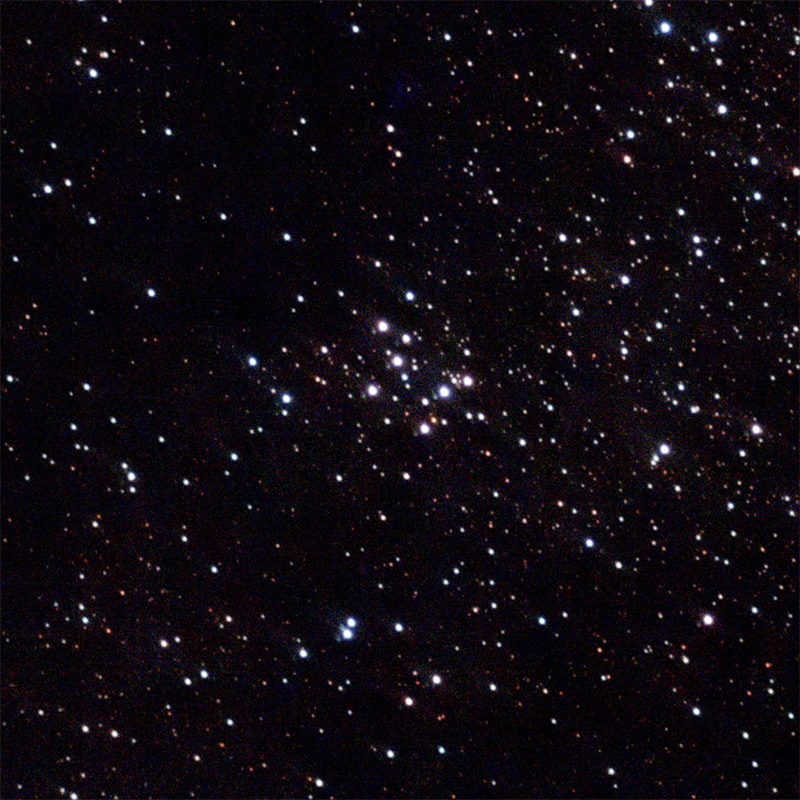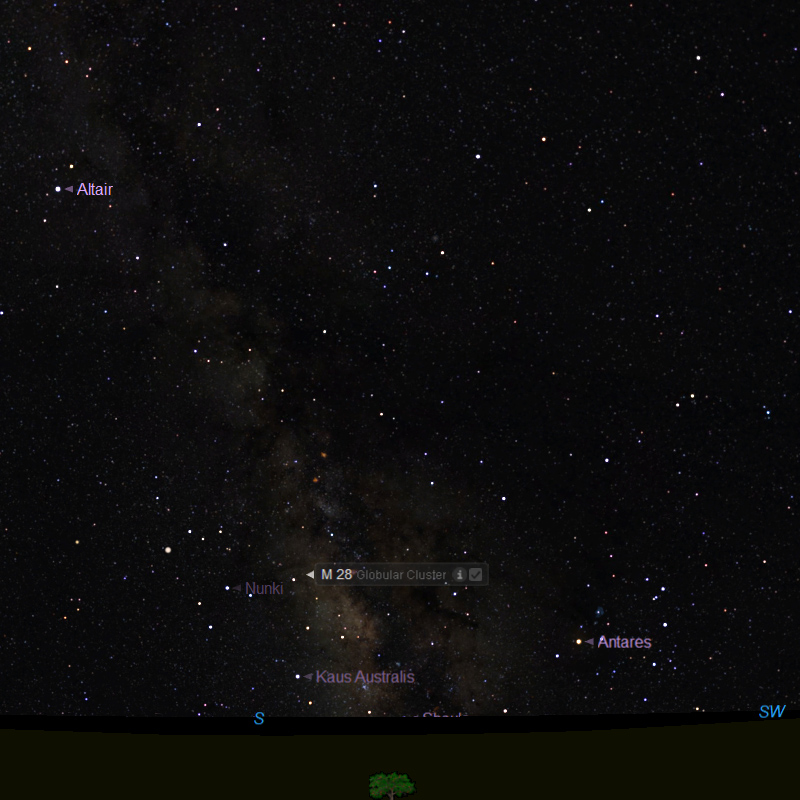M28

Credits: Keith Turnecliff, Nerja, Spain
The cluster has an apparent magnitude of 7.66 and lies at a distance of 17,900 light years, or 5,500 parsecs, from Earth. Its designation in the New General Catalogue is NGC 6626.
Messier 28 is quite easy to find in the sky as it lies less than a degree northwest of Kaus Borealis, one of the bright stars forming the Teapot asterism in Sagittarius.
However, as M28 is not particularly bright, it is invisible to the naked eye and only appears as a faint patch of light in binoculars.
Small telescopes will show a nebulous object occupying an area of 11.2 arc minutes in apparent diameter, while medium-sized and larger telescopes will reveal the cluster’s bright core
and resolve the stars.
Individual stars can only be seen in 4" and larger instruments.
Facts about M28 by Keith Turnecliff
M28 is at a distance of about 17,900 light-years away from Earth. It has a combined 551,000 times the mass of the Sun and is 12 billion years old.

Best viewed with resolution 1920 x 1080.
Credits: Image courtesy of Starry Night Pro Plus 8, researched and implemented by Keith Turnecliff.